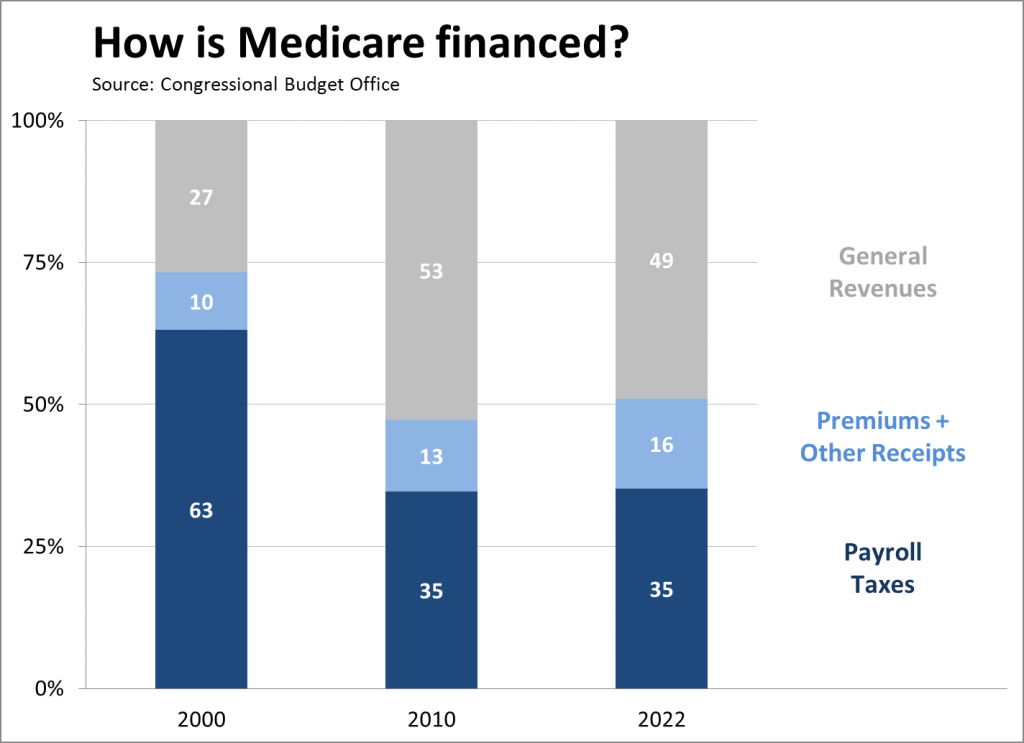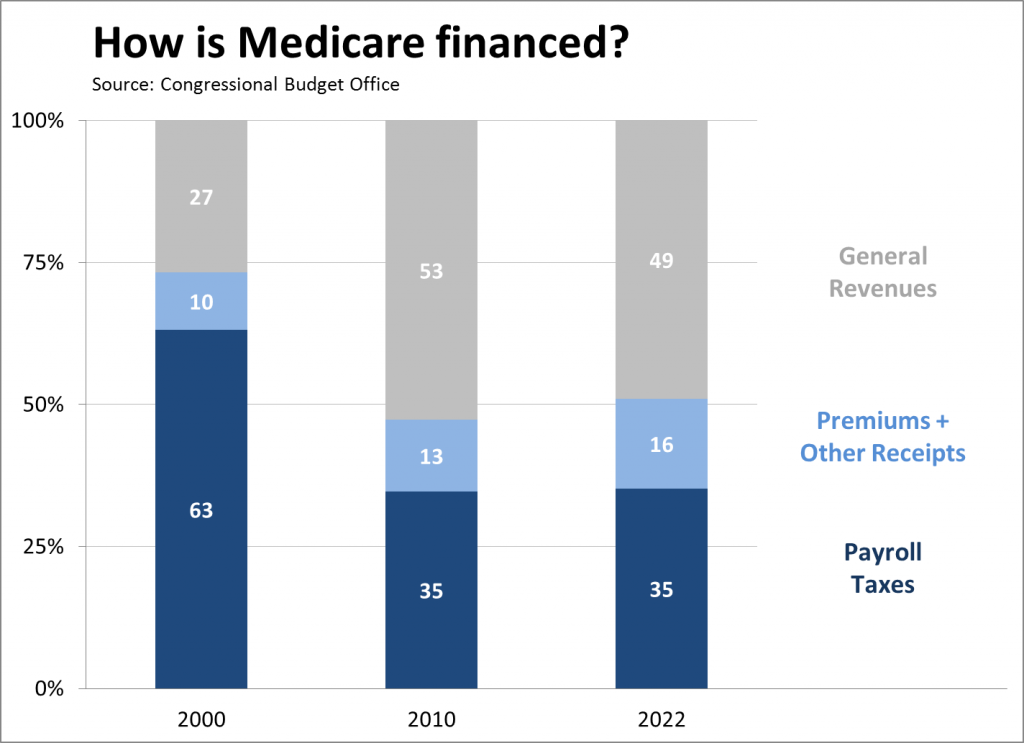The voices of Tax Policy Center's researchers and staff


I get the impression that many Americans believe Medicare is financed like Social Security. They know that a portion of payroll taxes goes to Social Security and a portion goes to Medicare. So they conclude workers are paying for Medicare benefits the same way they are paying for Social Security benefits.
That isn’t remotely true, as new data from the Congressional Budget Office demonstrate.
In 2010, payroll taxes covered a little more than a third of Medicare's costs. Beneficiary premiums (and some other earmarked receipts) covered about a seventh. General revenues (which include borrowing) covered the remainder, slightly more than half of total Medicare costs.
If you prefer to focus on just the government's share of Medicare (i.e., after premiums and similar payments by or on behalf of beneficiaries), then payroll taxes covered about 40% of the program, and other revenues and borrowing covered about 60%.
In contrast, payroll taxes and other earmarked taxes covered more than 93% of Social Security's costs in 2010, and that was after many years of surpluses.
The difference between the two programs exists because payroll taxes finance almost all of Social Security, but only one part of Medicare, the Part A program for hospital insurance. Parts B and D (doctors and prescription drugs) don't get payroll revenues; instead, they are covered by premiums and general revenues. But that distinction often gets lost in public discussion of Medicare financing.
As recently at 2000, general revenues covered only a quarter of Medicare’s costs. That share has increased because of the creation of the prescription drug benefit in 2003 and because population aging and rising health care costs have pushed Medicare spending up faster than worker wages. Over the next decade, CBO projects that premiums will cover a somewhat larger share of overall costs, while the general revenue share will slightly decline.
Note: For simplicity, I have focused on the annual flow of taxes and benefits. The same insight applies if you want to think of Social Security and Medicare as programs in which workers pay payroll taxes to earn future benefits. That's approximately true for workers as a whole in Social Security (but with notable differences across individuals and age cohorts and uncertainty about what the future will bring). But it's not true at all for Medicare.
Posts and comments are solely the opinion of the author and not that of the Tax Policy Center, Urban Institute, or Brookings Institution.
